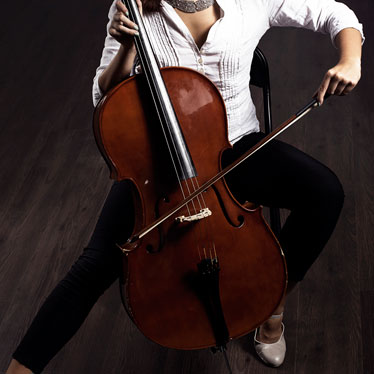Left-Handed Cellist? What You Need To Know

Choosing to learn to play the cello requires a dedicated commitment. This instrument creates hauntingly beautiful tones and has the power to speak to audiences in very personal ways. If you’ve chosen to learn to play the cello, training on this classical string instrument will offer you incredible returns for your efforts.
Many left-handed cello students wonder if there’s a special instrument that they need to buy, if they should have a luthier modify one to meet their needs, or if they should be aware of certain techniques before beginning their training. This list of basics can help left-handed cellists understand their particular requirements and find their way during the first year of training.
Cellos Aren’t Left-Right Oriented
The first thing that you need to understand is that there aren’t any “left-handed” cellos. They don’t exist, nor is there a need for them. Because of the playing position used with the cello, having an instrument oriented a specific way is not necessary. So, when you purchase or rent your first cello, understand that quality of materials and workmanship are the most important aspects to consider. Crucial factors to look for include:
- Craftsmanship and materials (well-fitted joints and rich tonewoods)
- The right size instrument for your body size (cellos are available in fractional sizes, depending on the needs of the individual. And, like many string instruments, playing on the wrong size can lead to serious back and neck injuries.)
- How the cellos sounds (if you don’t like the sound, you won’t want to practice)
Music Training with Cello Specifics
No matter what type of instrument you choose to learn, the training process is going to require that you develop muscle movement and dexterity that you’ve never used before. Being a left-handed cellist essentially means that you’ll be able to learn fingering techniques a little easier than your right-handed contemporaries, but bowing techniques will be a little more challenging. In effect, it doesn’t matter which of your hands is dominate, both of your arms and fingers will need to learn new things. And that is true of any musical instrument you study.
Since the soundpost and bass bar inside your instrument are “geared” for right-handed directions, it’s very difficult to modify the cello to accommodate a left-arm bowing technique. The construction of the instrument requires the specific direction, and left-handed cellists are better off learning to build right arm strength and dexterity rather than trying to physically modify the cello so that they can learn to play it backward.
In addition, if you want to be able to play professionally, or even participate in school orchestras, bowing the cello with your right hand is necessary. Otherwise, you’ll end up bowing into the player next to you.
Good News for Left-Handed Cellists
There is good news for left-handed cellists. Although you will have a little bit more difficulty learning to bow with your right arm, you’ll be able to execute fingering techniques much quicker and more naturally. In fact, great left-hand dexterity is required to play the cello, so you’ll already have an advantage. Having stronger command and flexibility in your left hand is a benefit.
Right handed cellists must cultivate an elasticity in their fingers that is completely foreign, however, left-handed cellists only need to train their less used right arm for bowing. Although learning how to properly bow your instrument may feel strange, it’s strange to everyone at first.
Left-handed cello students really just need to know exactly what right-handed students do; how to stay disciplined, practice wisely, and never give up. It’s challenging to master a stringed instrument like the cello, but if you’ll stick with it, the benefits that it will bring you will last your entire life.


